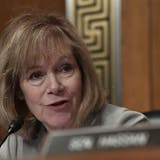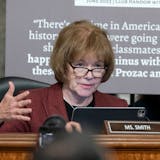Each year, Minnesota's hospital emergency rooms see thousands of patients with minor illnesses — from coughs to fevers — who could be better treated at a neighborhood clinic at drastically lower cost.
To stem that tide, state authorities are using a sophisticated computer screening tool that detects when people on public health insurance programs make dozens of unnecessary trips to hospital ERs and medical clinics. While largely unknown outside government circles, the program has quietly become a powerful tool to control waste in the multibillion-dollar Medical Assistance program while improving patient care.
The system, known as the Minnesota Restricted Recipient Program, has flagged patients who visited hospital ERs as much as 150 times in a single year. It also found people who routinely hop from one physician to the next searching for prescription painkillers.
By limiting these "high use" patients to a single primary care provider, along with a hospital and one pharmacy, the program is saving taxpayers at least $7 million a year in unnecessary medical costs, state data show.
"We pay for a lot of health care in this state, and we want to make sure the dollars go toward the care people really need," said Chuck Johnson, deputy commissioner of the Minnesota Department of Human Services, which oversees the program.
While controversial among patients, the restricted program is gaining acceptance among family doctors, who see it as a way to ensure that people with serious illnesses get more consistent care at a far reduced cost. Hundreds of people who once viewed the emergency room as their primary source of care are now going to neighborhood clinics and receiving regular checkups, state officials said.
The savings are significant. For each patient in the program, the state-federal Medical Assistance program saves $4,500 a year in unnecessary outlays. That includes a more than 50 percent reduction in ER visits and inpatient hospital stays, according to a 2015 report from the DHS Inspector General.
One neighborhood clinic, the Native American Community Clinic (NACC) in south Minneapolis, recently tracked the behavior of 14 patients who were placed in the restricted program for high use of medical services.


